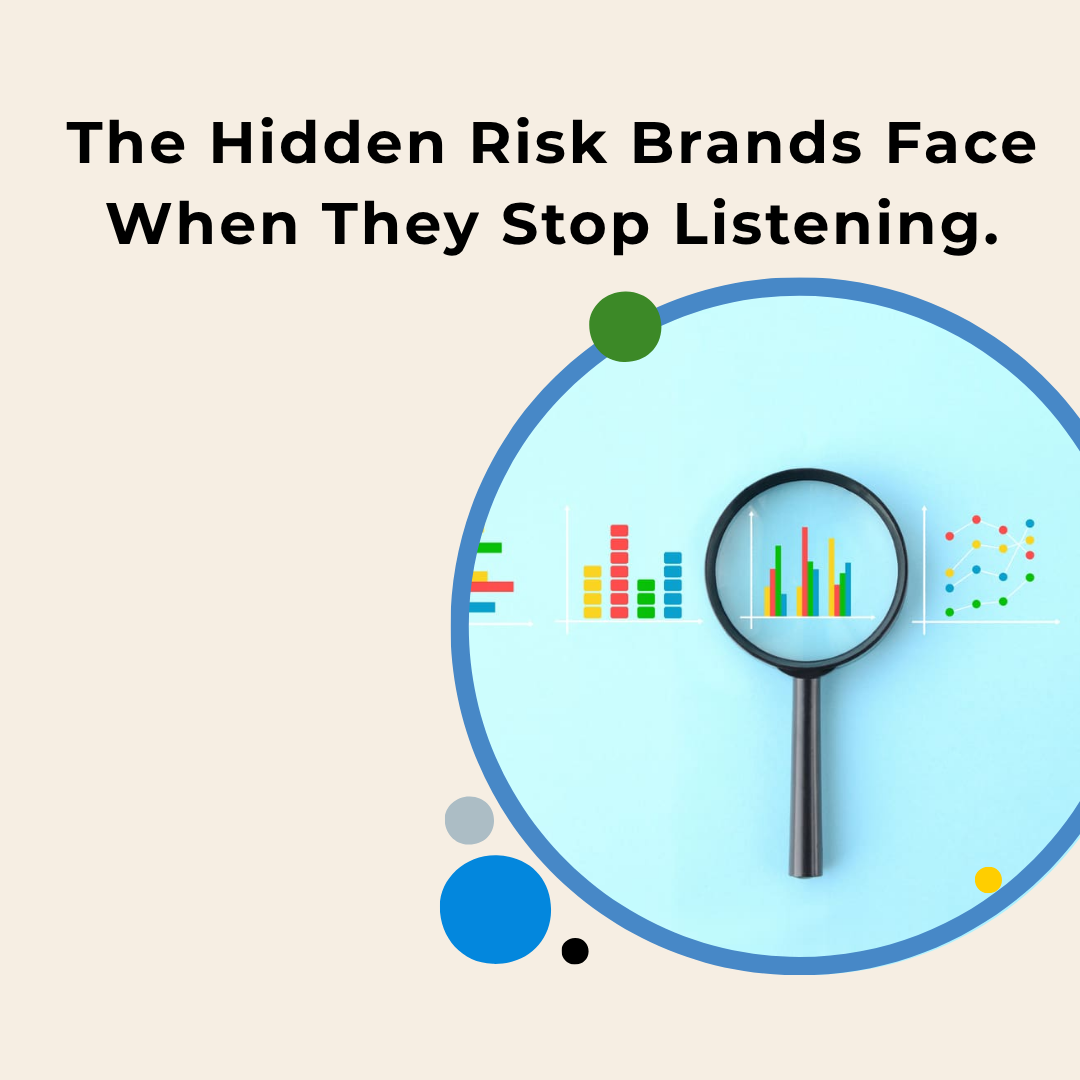
The Hidden Risk Brands Face When They Stop Listening.
Introduction
In today’s dynamic landscape, brand loyalty is not built on a single campaign or moment—it’s earned over time through consistent connection, relevance, and trust. Yet many brands make a fatal mistake: they stop listening. When companies assume they already know what consumers think, feel, or expect, they risk becoming outdated or misunderstood.
Consumer sentiment is fluid. It’s shaped not only by internal strategies and marketing efforts but also by viral trends, cultural shifts, competitive innovations, and global events. In this ever-changing environment, brand tracking is no longer optional—it’s essential for survival.
Let’s explore how brand tracking works, why it matters, and what happens when you stop listening.
What is Brand Tracking, and Why Does it Matter?
Brand tracking is the continuous measurement of your brand’s performance, perception, and positioning over time. It’s designed to identify how consumers view your brand, how it compares to competitors, and how external factors may be influencing its reputation.
At its core, brand tracking answers critical business questions:
Is our messaging resonating with our audience?
How do consumers feel about our brand?
Are we building loyalty or losing ground?
How does our performance stack up against competitors?
When done right, brand tracking acts like a radar system—alerting you to changing market conditions, shifting consumer behavior, and competitive threats.
Key Elements of Brand Tracking
Brand tracking goes beyond vanity metrics. It dives deep into tangible and emotional indicators that determine long-term success:
1. Brand Awareness
Unaided vs. Aided Awareness: Can consumers recall your brand without a prompt?
Top-of-Mind Awareness: Are you the first brand people think of in your category?
2. Brand Perception & Sentiment Analysis
Functional & Emotional Associations: Do consumers see your brand as trustworthy, innovative, or affordable?
Brand Personality: Is your brand seen as bold, caring, youthful, or reliable?
3. Purchase Intent & Loyalty Metrics
Likelihood of Purchase: Are consumers inclined to choose your brand next?
Customer Satisfaction: How do you compare with competitors?
Net Promoter Score (NPS): Are people recommending your brand?
4. Competitive Benchmarking
Market Position Analysis: Where do you stand in the industry?
Share of Voice: How much visibility does your brand command across media and advertising?
5. Media & Campaign Effectiveness
Are your marketing efforts creating awareness, driving conversions, or simply adding noise?
Which campaigns resonate, and which ones fall flat?
Turning Data Into Strategy
The real power of brand tracking lies in how insights are applied. Gathering data isn’t enough—brands need to interpret it, extract meaning, and act on it.
● Identifying Strengths and Weaknesses Early
Don’t wait for sales to dip or negative reviews to pour in. Early detection of shifts in sentiment allows brands to pivot before small issues become reputation crises.
● Optimizing Campaigns in Real Time
Brand tracking highlights which campaigns are working and which need rethinking. Instead of guessing, brands can refine messaging on the fly and drive better results.
● Benchmarking for Competitive Advantage
Tracking helps brands identify whitespace opportunities, avoid saturation, and anticipate where the market is heading—often before the competition notices.
● Building and Retaining Loyalty
Understanding why customers stay—or leave—helps brands strengthen their relationship with existing users through targeted retention strategies, loyalty programs, or experience upgrades.
Common Mistakes in Brand Tracking (and How to Avoid Them)
Even with the best intentions, brand tracking can fall short if these pitfalls aren’t avoided:
Measuring Awareness Without Sentiment: A well-known brand with negative perception is still in trouble.
Tracking Without a Clear Goal: Always tie tracking to strategic objectives—new markets, better engagement, improved retention, etc.
Ignoring Qualitative Feedback: Numbers show the “what.” Open-ended feedback reveals the “why.”
Failing to Act on Insights: Collecting data without action is like diagnosing an illness and refusing treatment.
Overlooking External Trends: Cultural shifts, economic conditions, and competitor actions all shape how your brand is perceived.
Brand Tracking is Not an Option—It’s Survival
In a fast-paced world where attention is fleeting and loyalty is hard-earned, brand perception is a moving target. What resonates with consumers today may be irrelevant tomorrow.
Brands that stop listening—whether due to complacency or outdated practices—eventually lose their footing. Those that thrive are the ones who track, listen, adapt, and evolve.
✔️ They don’t wait for a crisis to act.
✔️ They don’t assume; they investigate.
✔️ They stay one step ahead, not one step behind.
The bottom line? A brand that isn’t tracking its relevance isn’t just falling behind—it’s lost control of its own narrative.
Conclusion
Whether you’re building a new brand or managing an established one, brand tracking should be at the heart of your strategy. Regular check-ins on brand health empower you to stay connected with your audience, course-correct early, and lead with confidence.
Start listening today—before your consumers stop listening to you.
Get in touch to learn how brand tracking can future-proof your brand.


